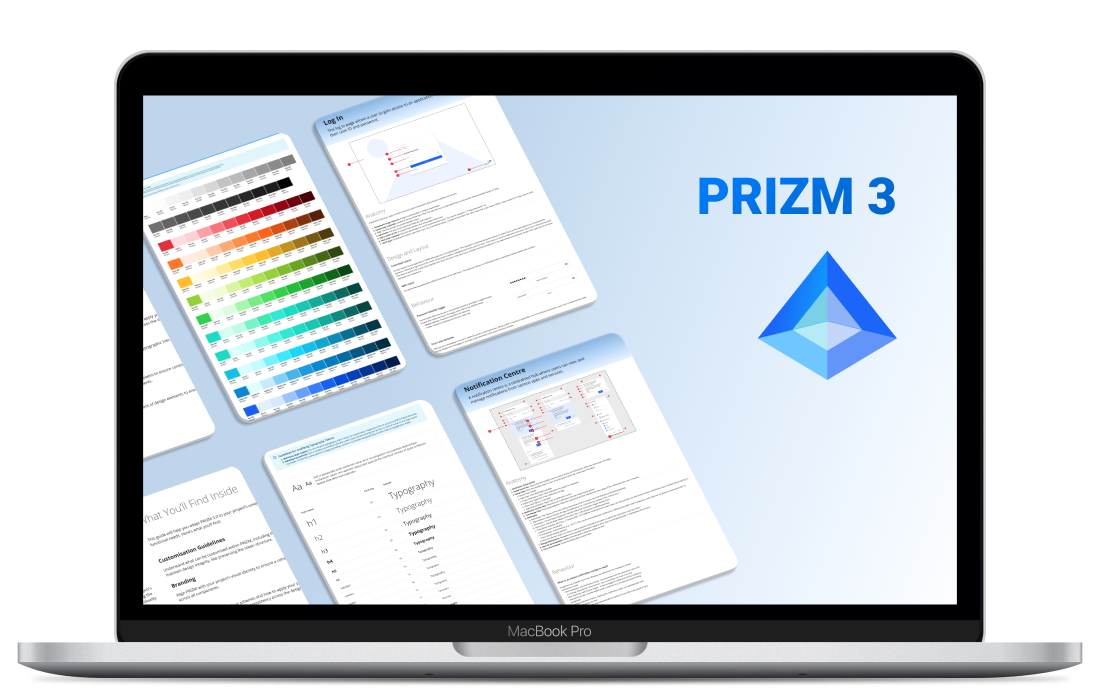PRIZM Design System
Strategising, building and maintaining DSTA's design system.
Role 👨🏻💻
Design Systems Lead
Team 👥
Me + Designers & Developers
Organisation 💼
DSTA, Singapore
Skills 🔧
Design Systems, Design Strategy

Background
PRIZM is DSTA’s design system, created to drive efficiency, quality and consistency across products. It began as a bottom-up initiative within a single product line, but is now evolving to support the varied needs of multiple domains.
The Problem
PRIZM 2 faced scalability challenges, including limited manpower and resources, component quality and generalisability issues, and increasingly complex branding requirements.
The Solution
We launched PRIZM 3 with a refined design strategy: adopting Material UI, conducting UI research, and implementing a multi-brand approach. PRIZM 3 includes a UI kit, code library, and usage guidelines, with custom templates added regularly to support new product needs.
Impact
(1) Efficiency: PRIZM 3’s UI kit and code library streamline workflows for approximately 56 designers and developers, saving each user 0.5 days per two-week sprint.
(2) Quality: PRIZM 3’s custom components and guidelines are backed by extensive research and grounded in design principles, ensuring the highest quality standards.
(3) Consistency: PRIZM 3 standardises components and interaction patterns across 8 projects and 3 chapters, ensuring a cohesive user experience across DSTA's diverse products.
→ PRIZM 3.0 saves an estimated 5824 man-hours per year, equivalent to 2.8 full-time personnel.
📩 This is a brief overview - drop me an email if you'd like to request for the full case study.
← Previous Project: TrueCast